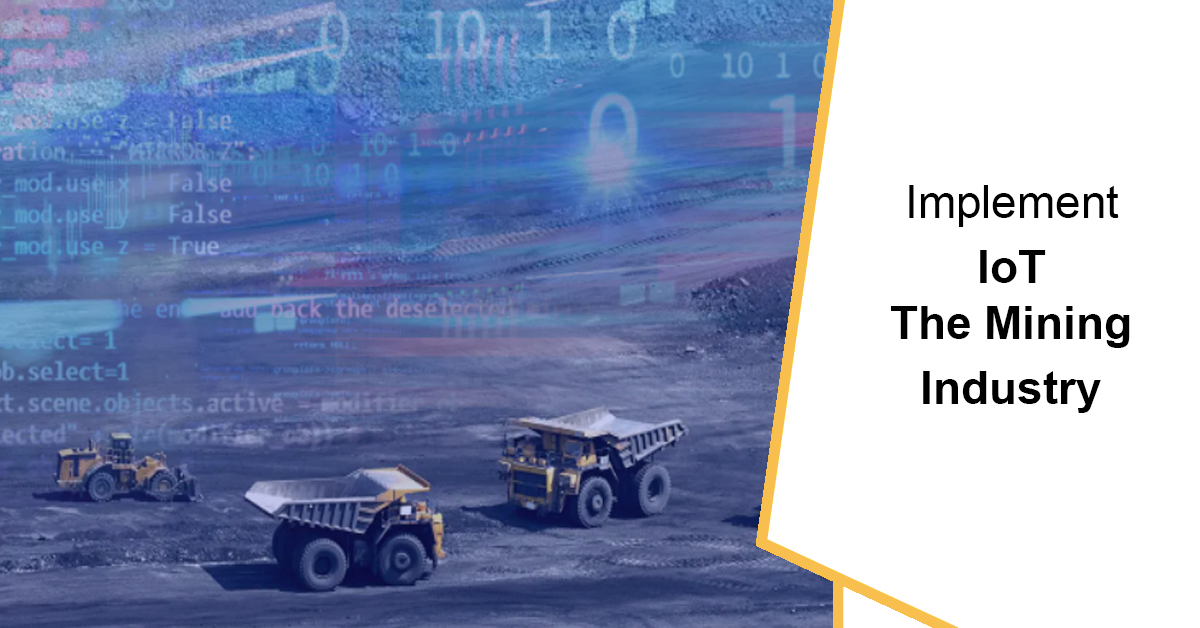Mining is a process of extraction of valuable minerals from the earth. It’s a critical industry for any economy and there are many countries that depend on it for their livelihood. The mining process includes the extraction, concentration, and refining of raw materials to produce a finished product.
IoT has been applied in various industries such as healthcare, agriculture, education, government, and manufacturing with great success. This article will show you how to implement IoT in mining using an example from the gold industry.
The Internet of Things (IoT) can be used in the mining industry to improve efficiency, safety, and environmental monitoring. IoT-enabled devices such as sensors, cameras, and drones can be used to gather real-time data on mining operations, which can be used to optimize equipment and processes, reduce downtime, and improve overall productivity. Additionally, IoT technology can be used to improve worker safety by monitoring for hazardous conditions and providing early warning alerts. Environmental monitoring can also be improved through the use of IoT sensors to detect air and water pollution, and track the movement of wildlife in and around mining sites.
What Is IoT?
IoT (Internet of Things) refers to “a global system of interconnected networks or smart devices that communicate and sense or interact with one another.”
Connected devices, such as sensors and remote switches, enable these machines to connect themselves remotely, monitor their operations in real-time, and transfer data to a central hub. IoT connects the physical world to the internet which enables more seamless interactions between objects.
How To Implement IoT In Mining, With An Example From The Gold Industry
The mining industry needs to invest in technology to compete with other industries for business.
One strategy is to invest in IoT, which provides many benefits for the mining industry. For example, remote monitoring can help operators control machinery that is far away from their operations. It also helps them handle tasks that are dangerous or difficult for humans, such as entering mines without compromising air quality.
A specific case study is General Motors’ implementation of IoT in the gold industry at its mine in Port Pirie, Australia. The mining company wanted to find a way to increase efficiency by monitoring the 3 million tons of ore it processes each year.
General Motors installed sensors on its machines and used machine learning algorithms to monitor the ore’s performance during processing. After two years of experimentation, it found that it could reduce capital investment by 8%. Another use case with Minocular implemented at small limestone mines saw significant growth in production by 5% just by monitoring asset payload and skilling operator to do optimal loading of equipment.
Benefits Of IoT In The Mining Sector
The mining industry is in a constant state of evolution and this has led to the use of technology and data analytics to improve productivity and profitability. IoT offers a number of benefits that can help mining players improve their operations and maximize profits.
One such benefit includes the ability to manage equipment remotely. This reduces the need for onsite maintenance, which allows for more time spent collecting valuable data about the mine. Remote management also eliminates delays caused by bad weather or other obstacles, which can be costly for mining operators.
Another key benefit of IoT is the automation it creates in mining operations, which translates to savings in resources like water, electricity, and manpower. The increase in operational efficiency and transparency will ultimately enable mines to become more responsive and competitive.
The use of IoT technology in mining has already proven effective in areas such as remote monitoring. Now the next step is for companies to implement it in other areas like exploration and production; we’re seeing an increasing number of pilot projects being rolled out around the world.
IoT & Artificial Intelligence (AI) applications in the Mining industry
IoT and AI can help mining companies improve safety, increase productivity, and ensure a better quality of products.
The use of IoT and AI in mining is on the rise as it has been proven to be a cost-effective solution for improving efficiency and quality. These solutions can be applied across the entire mining process from monitoring equipment to extraction to refining.
In this article, we’ll take a look at an example company that’s successfully implemented IoT & AI in their operations. This will give you a glimpse into what IoT & AI have done for this company and show you how they could do the same for yours.
Challenges for IoT in Mining
IoT is a powerful technology that can help mining companies address challenges in the industry. From safety to sustainability to efficiency, IoT can bring many benefits to companies. However, there are also challenges with implementing IoT in mining.
One of the challenges is communication network coverage. Mining operations are often far away from communication networks, which makes it difficult to implement an IoT solution.
Another challenge is the latency between the operations and information systems (IS). If there’s too much latency between IoT devices and IS systems, then it can impact how reliable data transmission is. And this will make it difficult to ensure data integrity across the process chain because there may be time lags or gaps in the data flow.
Lastly, if there are issues with connectivity, troubleshooting becomes more complicated since you need to figure out where exactly the issue resides along the whole process chain.
Conclusion
Implementing IoT in the mining sector is a revolutionary idea, which will help in many ways from improving mining operations to exploring new opportunities. The main challenge for IoT in the mining sector is the development of a reliable low-cost wireless network, which can operate in hazardous conditions and provide data connectivity.


